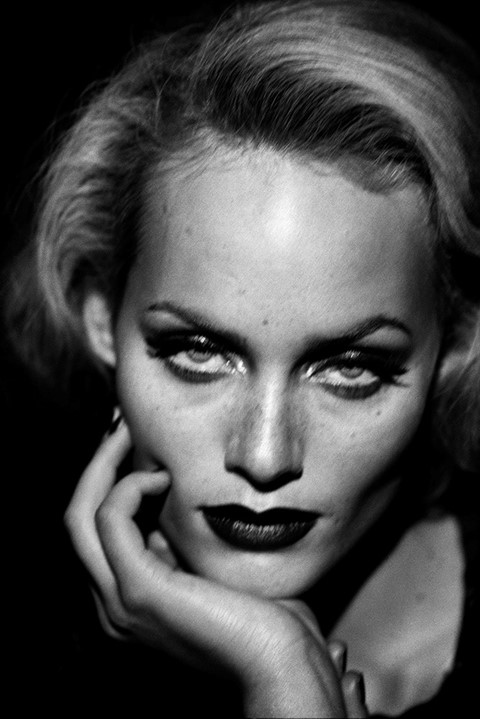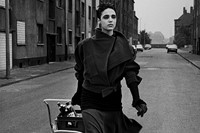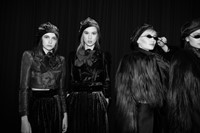Featuring never-before-seen work, a new exhibition at Armani/Silos in Milan traces Peter Lindbergh’s revolutionary photography back to his hometown of Duisberg in West Germany
Five years ago, Giorgio Armani opened an exhibition space in Milan to celebrate 40 years of his career so far. Named Armani/Silos, the simple yet commanding building was once an industrial granary, constructed in 1950 – a past which not only gave the gallery its unusual beehive structure, also its name. Armani “decided to call it silos because this building used to store food, which is, of course, essential for life,” the institution says. “For [him], just as much as food, clothes are also a part of life.”
With simplicity and authenticity at its heart, the space befits the subject of its latest show: an exhibition celebrating the legacy of the late, great image-maker Peter Lindbergh, who died last September. Lindbergh’s stripped-back style, shot mostly in black and white, was an electrifying contrast to the airbrushed fashion photography of the 80s and 90s, setting the photographer apart from his contemporaries and changing the course of the medium forever. Entitled Heimat. A Sense of Belonging, the recently opened exhibition houses both celebrated and never-before-seen work by the revolutionary photographer, including those from the ‘supermodel era’ Lindbergh helped usher in during the 90s – his 1990 Vogue cover was hailed the “the birth certificate of the supers” – alongside portraits of cultural figures, such as Isabella Rossellini and Charlotte Rampling.
Opened just ahead of the Giorgio Armani Autumn/Winter 2020 show (pictured below), the exhibition borrows its name from Lindbergh’s series Heimat, a German word which means ‘more than home’ – a “place of the heart; where one belongs”. This theme of home and belonging underscores the exhibition, which traces Lindbergh’s work back to the industrial town of Duisburg, Germany where he grew up, having moved there from Poland as a child. Factories, fog, metal and concrete form the landscape of the city in west Germany, an unglamorous setting which the exhibition reveals informed Lindbergh’s vision of raw beauty. In a wistful 1984 shot of Amanda Cazalet walking down an empty Duisburg street with a trolley of drinks in tow, the city’s lasting influence on Lindbergh’s cinematic style is particularly evident. A love of stark, truthful beauty meant much more to Lindbergh than style; the photographer once said “it should be a duty for every photographer working today to use [their] creativity and influence to free women and finally everyone from the fervour of youth and perfection”.
Among Lindbergh’s portraits of some of the world’s most famous faces are severe images of similarly industrial scenes, such as a Berlin night’s sky in which a full moon shares the frame with cranes, or a curving Brutalist building captured in brooding black and white. A sense of ‘heimat’ is felt too in a cinematic 1993 Emporio Armani Magazine shot of Alessandra Carlsson, Beri Smither and Harue Miyamoto on the beach at Beauduc, in which they gaze piercingly into the camera while sat on wrought-iron stools. “The core of the Armani/Silos exhibition revolves around images in which expressive industrial surroundings are more than mere backgrounds,” says Armani/Silos of the show. “[They are] narrative protagonists, as beautifully naked in their truth as Lindbergh’s portrait.”
Above all, the show is testament to Lindbergh’s enduring legacy. “I have always admired Peter for the consistency and intensity of his work,” says Armani, whose collaborations with Lindbergh date back to the 80s, and who curated the exhibition himself. “Timelessness is a quality I personally aspire to, and one that Peter definitely possessed. With this exhibition at Armani/Silos I want to pay tribute to a wonderful professional companion whose love for beauty represents an indelible contribution to our culture, not just to fashion.”
Heimat. A Sense of Belonging is open at Armani/Silos in Milan until August 2, 2020.












